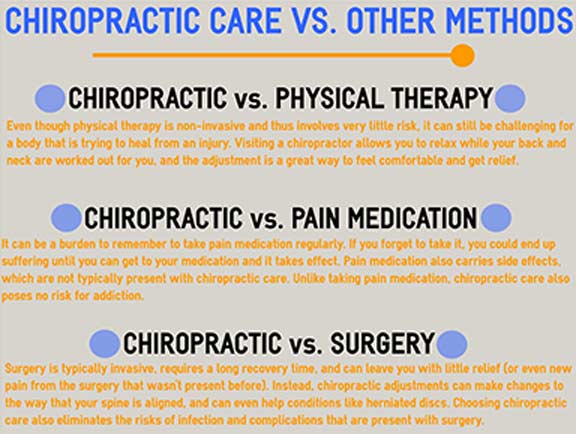The Connection In Between Pose And Pain In The Back: Ways To Make Certain Correct Positioning All Day
The Connection In Between Pose And Pain In The Back: Ways To Make Certain Correct Positioning All Day
Blog Article
Staff Writer-Ibrahim Patton
Maintaining correct position isn't nearly staying up right; it's about straightening your body in such a way that supports your spine and decreases the risk of back pain. The method you sit, stand, and move throughout the day can substantially affect your spinal health and wellness. Yet how specifically can https://www.endocrineweb.com/conditions/thyroid/weird-thyroid-symptoms guarantee good positioning consistently, even during active days full of numerous tasks? Let's delve deeper right into the refined yet impactful modifications you can make to your day-to-day routine to maintain your back satisfied and healthy and balanced.
Significance of Appropriate Posture
Correct posture is essential in keeping a healthy back and avoiding pain. When https://best-health-chiropractic62839.yomoblog.com/37001418/utilize-chiropractic-like-improve-your-performance-in-athletics-and-explore-the-essential-elements-that-specify-this-substantial-link rest or stand with excellent stance, your back is in placement, decreasing strain on your muscles, ligaments, and joints. This positioning permits the body to disperse weight equally, preventing excessive anxiety on certain areas that can bring about discomfort and discomfort. By keeping your spine appropriately straightened, you can additionally boost your breathing and digestion, as slouching can press body organs and limit their functionality.
Moreover, keeping excellent pose can boost your overall appearance and self-confidence. When you stand tall with your shoulders back and head held high, you exude self-confidence and appear more friendly. Great position can also make you really feel more invigorated and alert, as it promotes proper blood flow and enables your muscles to function successfully.
Integrating correct posture into your everyday regimen, whether sitting at a desk, strolling, or working out, is vital for avoiding pain in the back and promoting overall health. Keep in mind, a small change in just how you hold on your own can make a significant distinction in just how you really feel and function throughout the day.
Common Postural Mistakes
When it concerns maintaining excellent pose, many individuals unconsciously make typical errors that can add to back pain and pain. One of the most common mistakes is slouching or stooping over while resting or standing. This setting places too much pressure on the back and can result in muscle inequalities and discomfort over time.
One more common error is overarching the lower back, which can squash the all-natural curve of the spinal column and create discomfort. Additionally, going across legs while resting may feel comfy, but it can produce a discrepancy in the hips and pelvis, causing postural concerns.
Making use of a cushion that's as well soft or also solid while sleeping can also impact your alignment and add to pain in the back. Finally, continuously craning your neck to consider screens or readjusting your position frequently can stress the neck and shoulders. Being mindful of these typical postural blunders can assist you keep better placement and lower the danger of pain in the back.
Tips for Correcting Positioning
To improve your alignment and lower pain in the back, it's important to focus on making small adjustments throughout your daily routine. Start by being mindful of your stance. When resting, guarantee your feet are level on the floor, your back is straight, and your shoulders are relaxed. Prevent slouching or leaning to one side. Usage ergonomic chairs or paddings to support your lower back.
When standing, distribute your weight uniformly on both feet, keep your knees slightly curved, and tuck in your hips. Engage your core muscular tissues to support your back. Take breaks to stretch and walk if you have a sedentary work. Incorporate workouts that strengthen your core and back muscles, such as planks or bridges.
While sleeping, utilize a pillow that sustains the natural curve of your neck to maintain correct spine placement. Stay clear of sleeping on your stomach, as it can stress your neck and back. By being mindful of these ideas and making small modifications, you can gradually correct your positioning and minimize pain in the back.
Conclusion
Remember, preserving good position is essential to stop back pain and promoting back health and wellness. By being mindful of your positioning, distributing weight equally, and engaging your core muscular tissues, you can minimize strain on your back and reduce the danger of pain and injury. Include ergonomic assistance, take normal breaks to stretch, and reinforce your core and back muscles to keep proper placement throughout the day. Your back will thank you for it!
